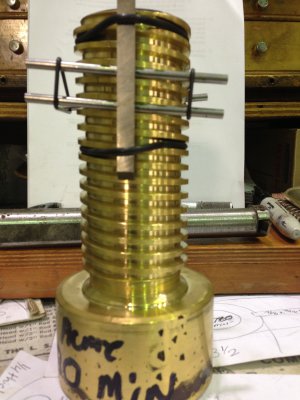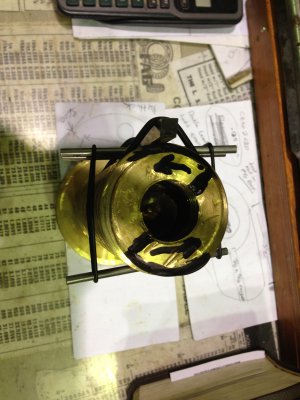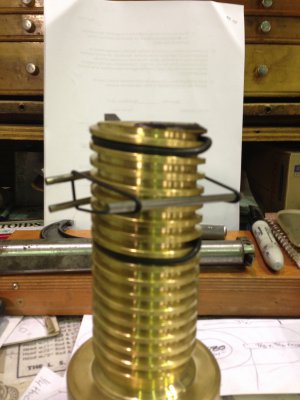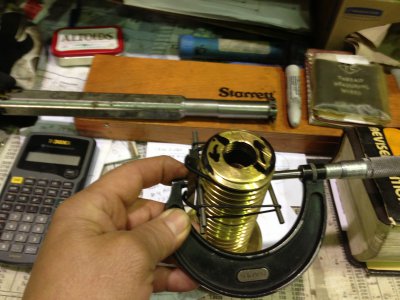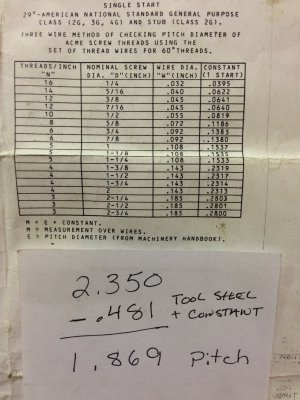Hi everyone, Had to make another double lead left hand acme nut again. I've made a couple of these nuts over the last 15 years or so. Problem is, I had to fit them to a valve stem about a mile away from the shop. So this time i made a test plug. Thought i'd try to post a couple of pics. I measured the stem over wires on both leads. Fortunantly they were the same. I made this one with the pitch dia. about .002 thou bigger. My nut fit perfectly on the first try. this shaft is 2 inch dia. with a double lead #4 left hand acme thread. I made my nut out of everdur which should hold up well. The test plug was just a piece of bronze i had laying around. If anyone is interested i can try to take pics of the method i used to measure pitch dia. I was well pleased with the result. I threaded both parts on a tool mex lathe, and split the thread instead of doing one thread at a time. I find it less time consuming and more accurate to do it that way.
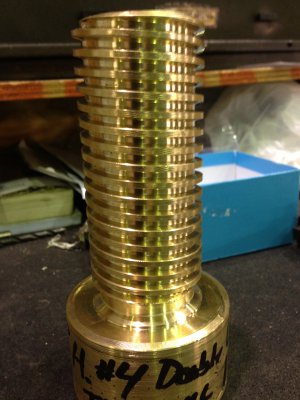
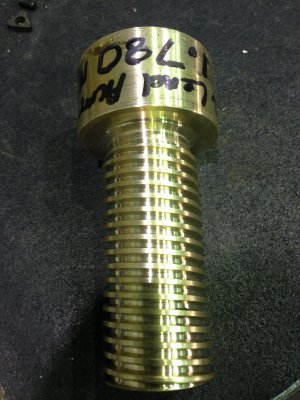


Last edited:


